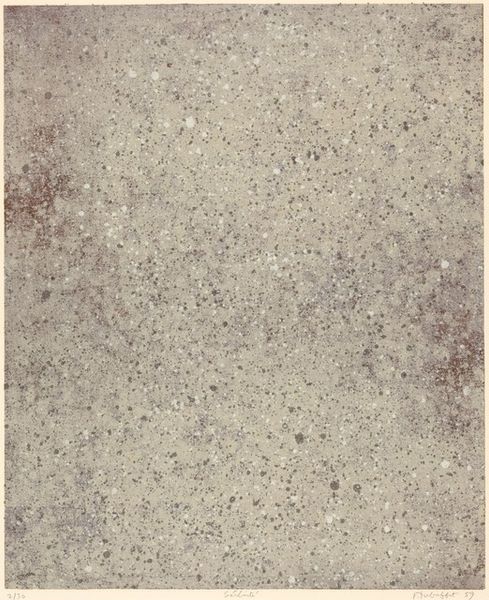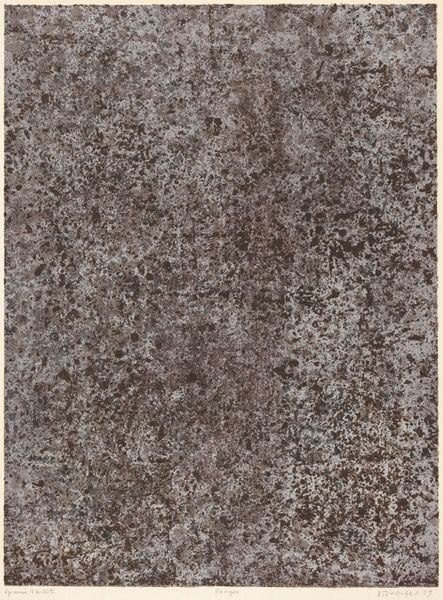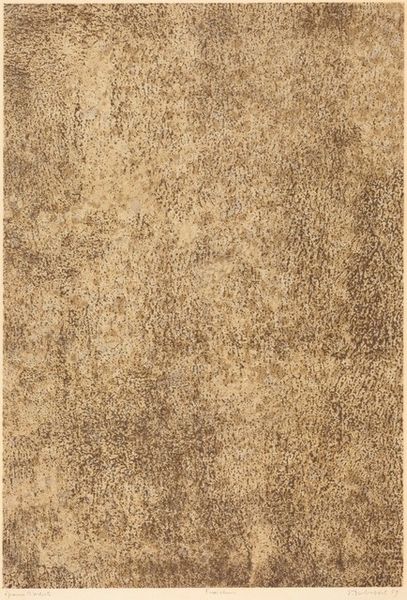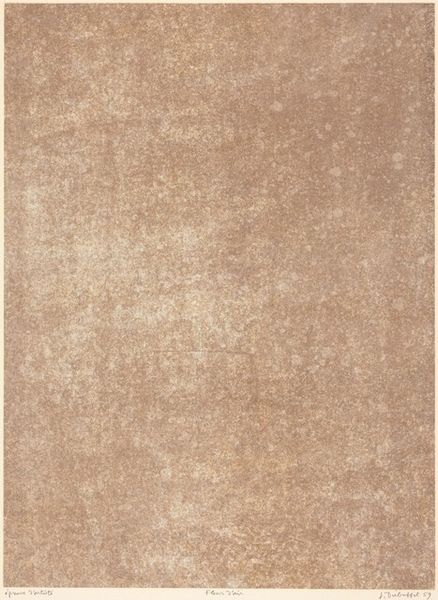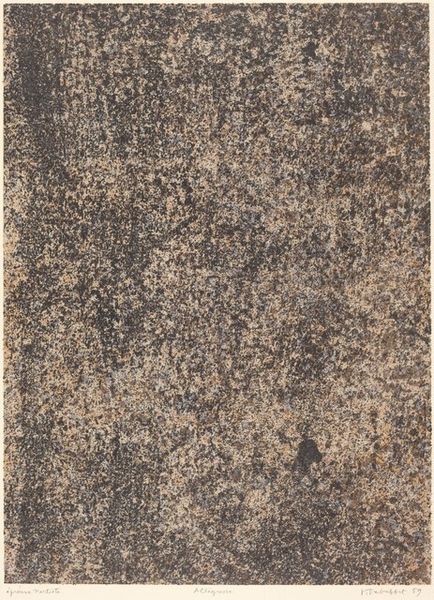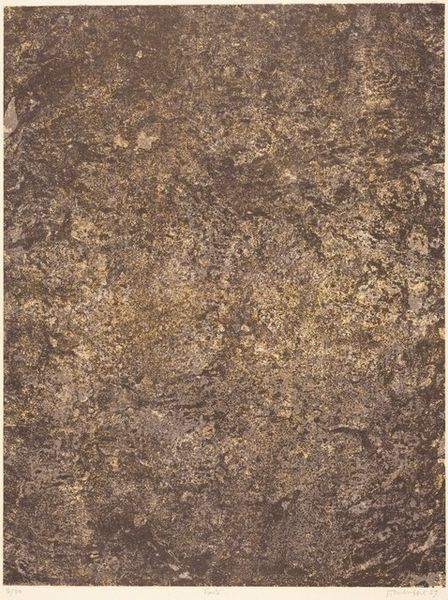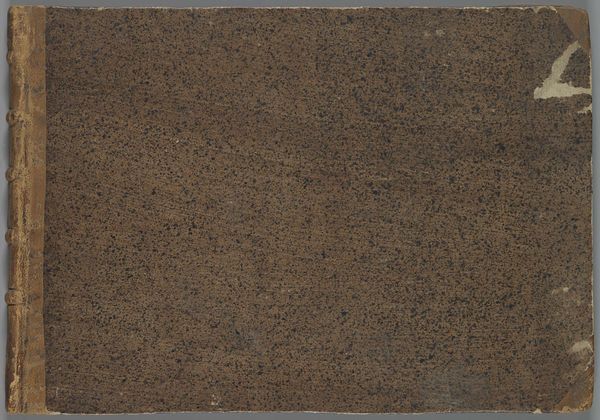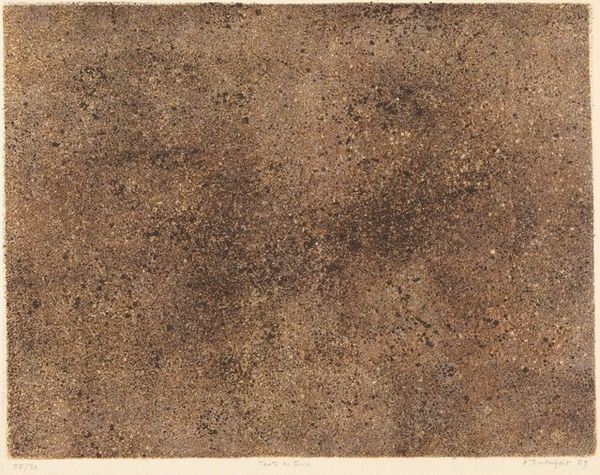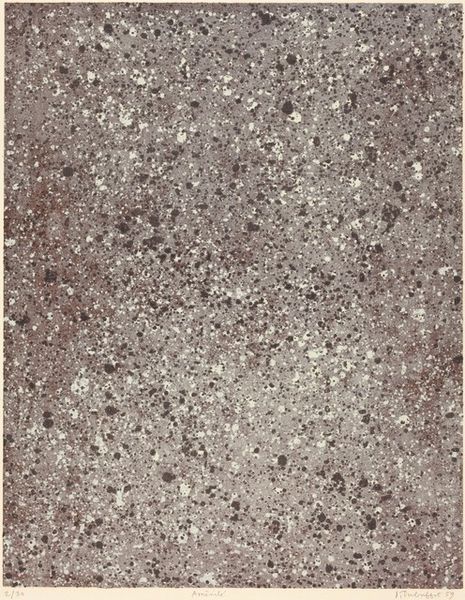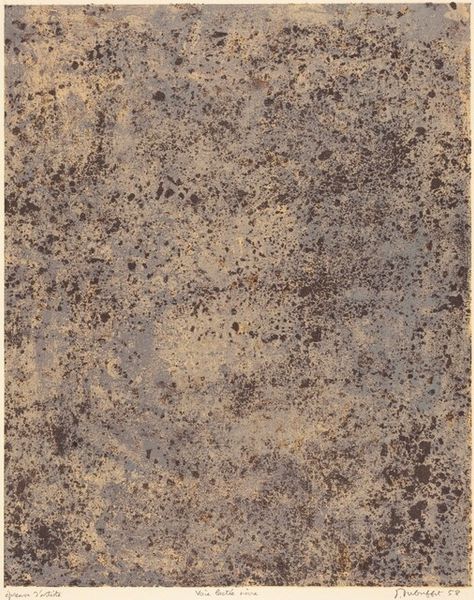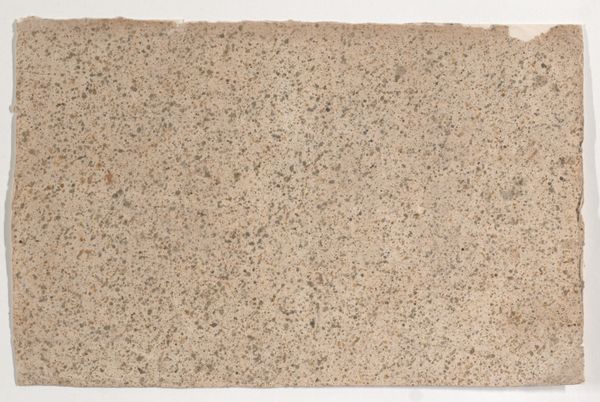
Copyright: National Gallery of Art: CC0 1.0
Editor: So, this is Jean Dubuffet's "Fragilité," a print from 1959. It looks like an accumulation of tiny, almost granular marks on the paper. It reminds me of a microscopic view of some material. What draws your eye when you look at it? Curator: Immediately, the labor. Consider the process to create this seemingly simple accumulation. Dubuffet often challenged traditional artistic processes, bringing a focus to the raw, unrefined, even abject materials. Here, what kind of printing process would allow that distribution of material? Is it purely chance, or carefully controlled? Editor: That's interesting. It does seem like a very deliberate action, especially considering the title, "Fragilité". Is the title perhaps hinting at the ephemeral nature of materials? Curator: Precisely. He often incorporated materials typically dismissed, emphasizing the act of making. With that, he highlighted the potential value embedded in all processes and materials, including ones typically seen as waste or disposable. Where does this “matter painting” connect with his rejection of traditional beauty? Editor: So he's taking things that aren't traditionally considered valuable materials and showing them in a new light? By forcing us to reconsider materials and process, does Dubuffet make us consider how we define what is 'precious'? Curator: Absolutely. Think about the Art Informel movement. It rejected geometric abstraction for a more intuitive, process-oriented approach. The artist’s hand, the material’s inherent properties—these are paramount. Editor: That's so interesting. I never thought of the labor behind printmaking itself contributing to the artwork's meaning in this way, but focusing on how the work was made really shifts my perspective. Curator: Indeed, thinking about his influences, the raw, immediate nature of the art produced by children or the mentally ill – Dubuffet forces a rethinking of value and art production in a very material sense.
Comments
No comments
Be the first to comment and join the conversation on the ultimate creative platform.

